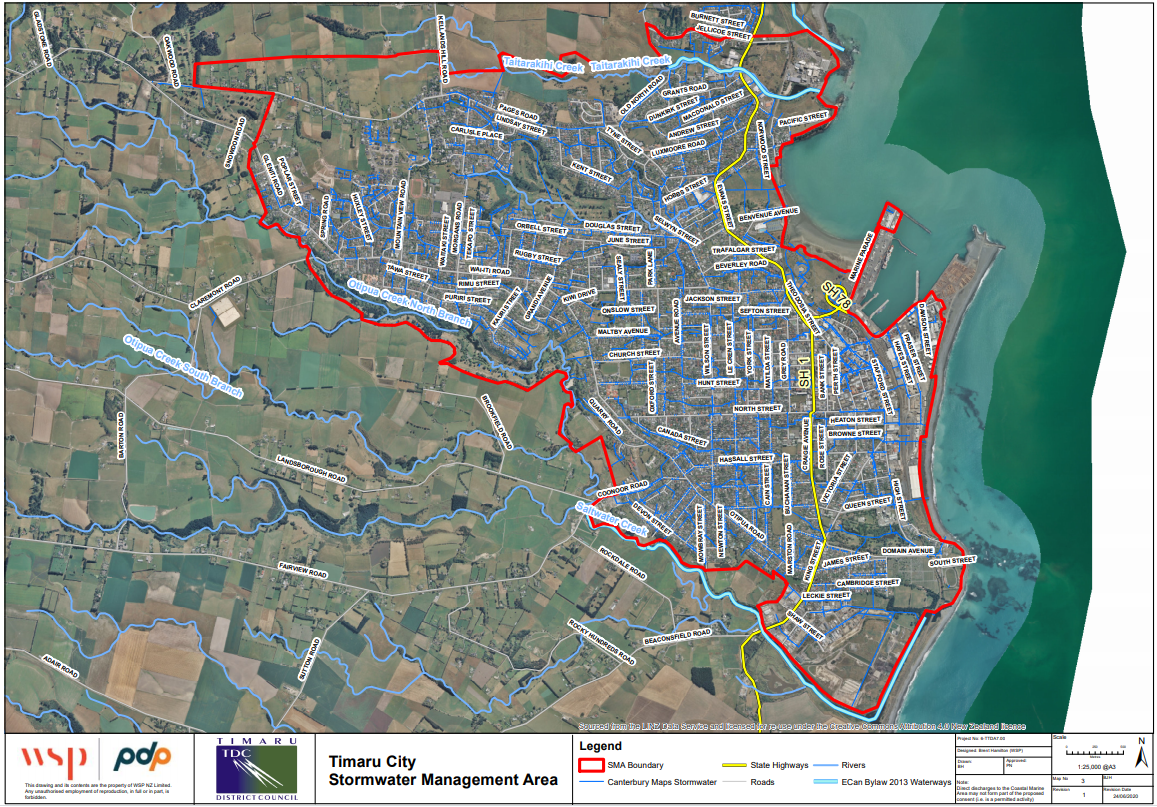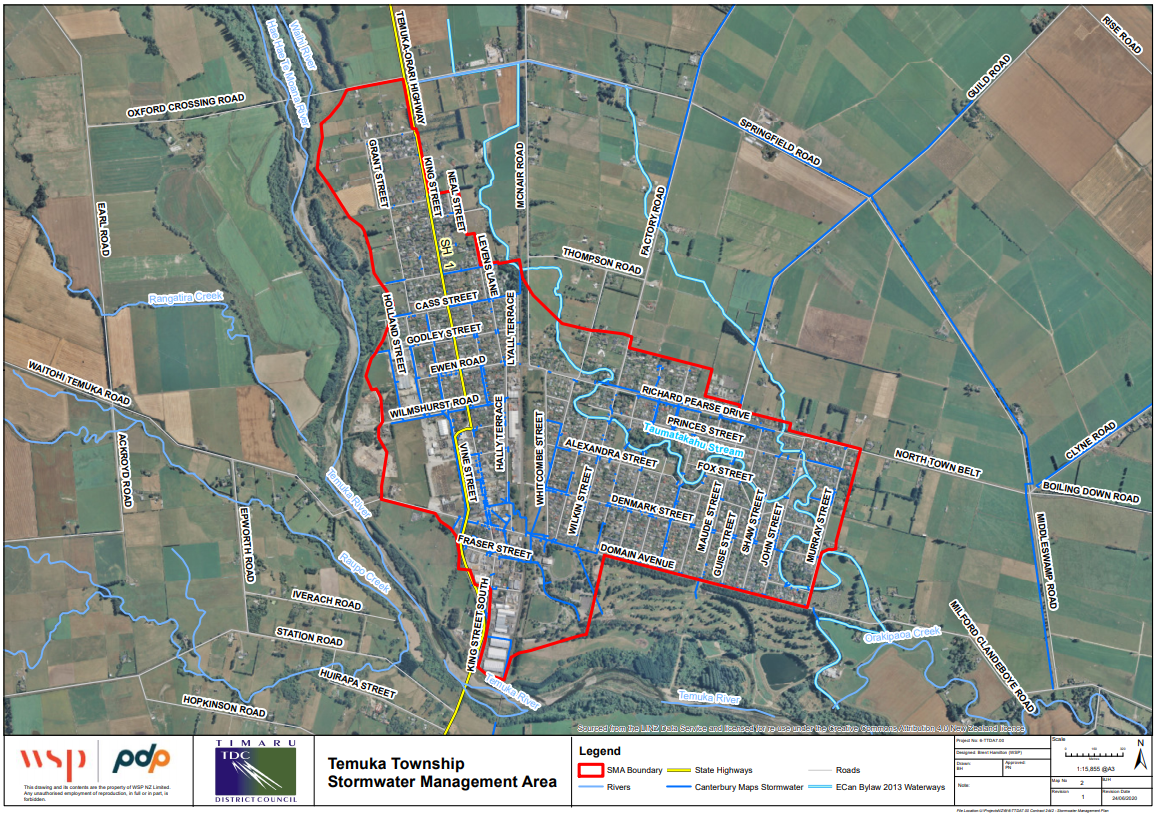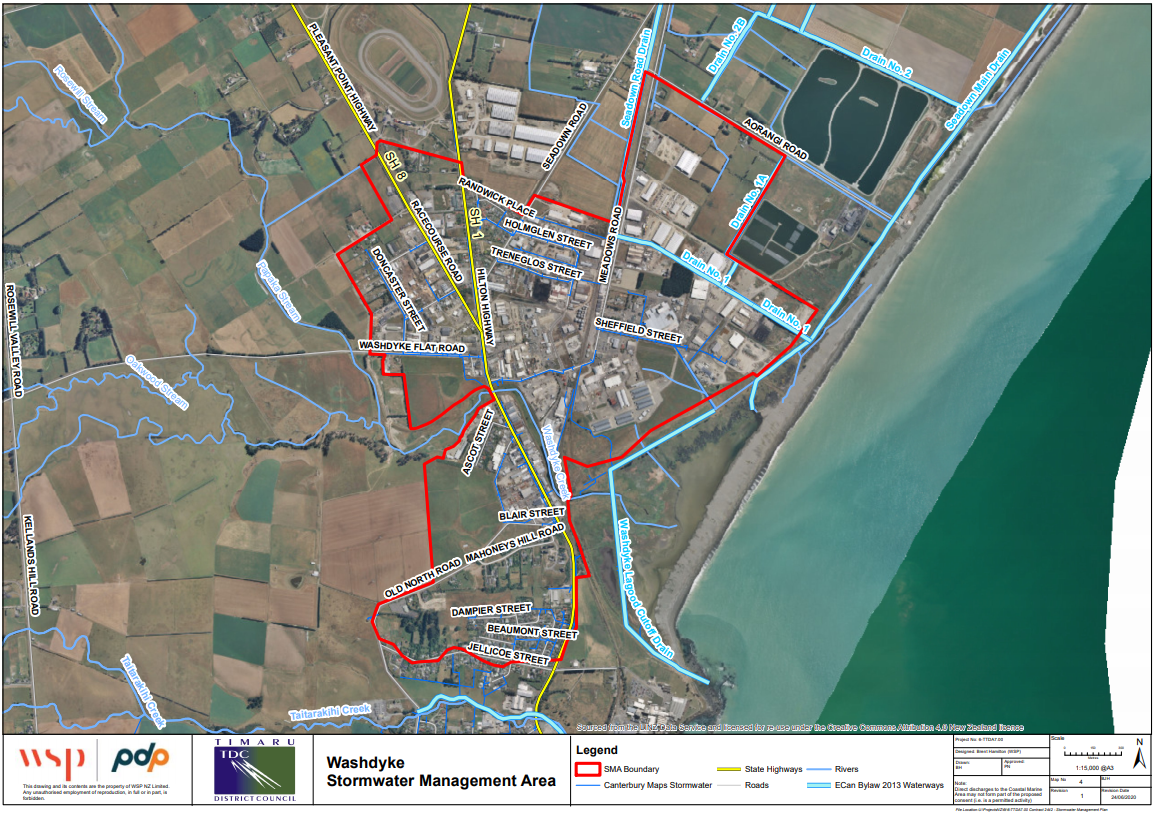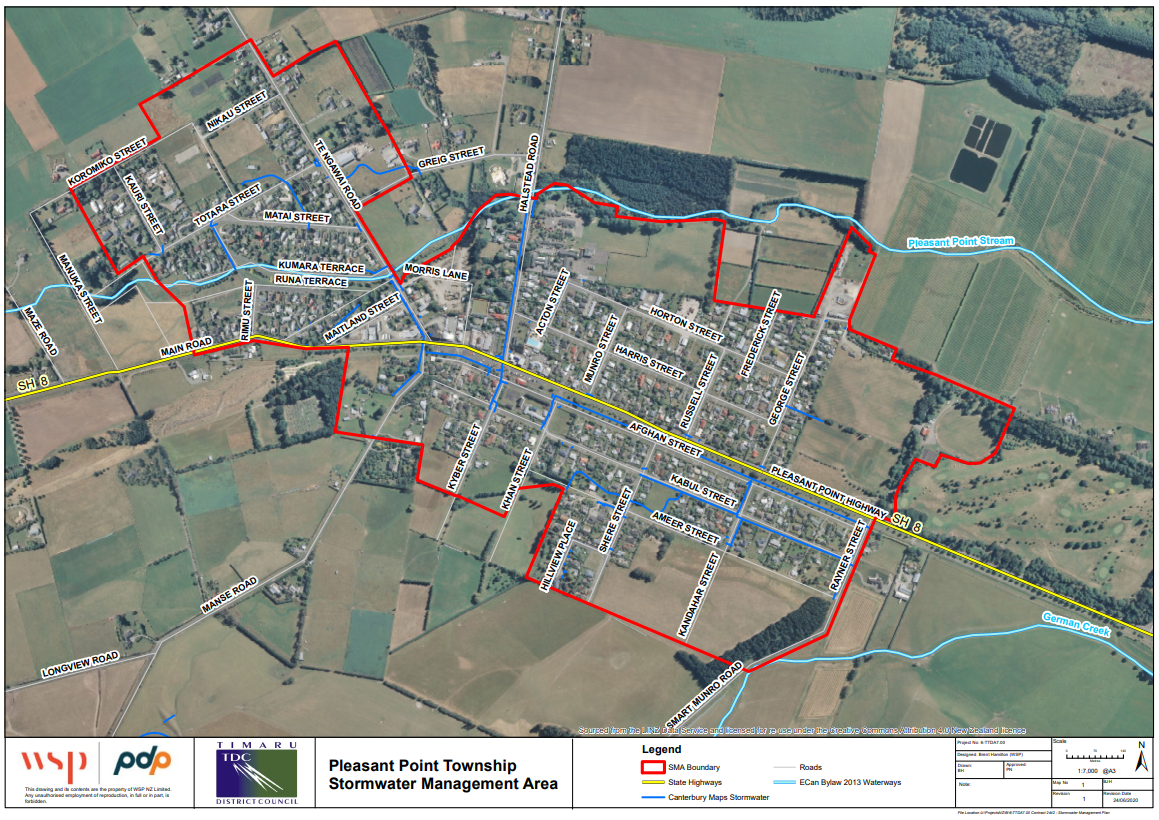In this section
Public consultation results
Thank you to those of you who participated in our Stormwater Management Plan consultation in November 2021 and gave us your feedback. We received a total of 51 submissions (online or via hard copy) and it was great to see thoughtful comments and consideration of the issues.
Key findings
- Of the total number of survey respondents, the most commonly experienced stormwater issues were flooding and pollution (both affecting 57% of respondents), followed by lack of maintenance (55%), poor stream health and climate change (51% each).
- When stormwater issues were rated in terms of the most critical, the two top issues identified were: loss of aquatic life/habitat, followed by polluted stormwater entering waterways.
- All survey respondents identified some usage of their local waterways and surrounding areas, including for running/walking, relaxing, fishing, food gathering and kayaking.
- Survey respondents reported low overall levels of satisfaction with the quality of our waterways. Timaru and Temuka waterways scored higher than the quality of Pleasant Point and Washdyke waterways (Washdyke was the lowest).
- 25% of survey respondents perceived Timaru District Council’s management of stormwater in their area as being either very good or excellent, 45% perceived it to be average, whereas 30% of respondents thought Council’s stormwater management to be either poor or very poor.
- The greatest threats identified to local waterways by survey respondents were: fertilisers/pesticides (highest) and rubbish/litter and industrial pollution (second equal). Car/house washing and animal waste were perceived to be the lowest overall threats.
Full results
View a copy of the full results below:
Next steps
We’re looking forward to continuing the stormwater conversation this year as we develop our stormwater goals and objectives further, starting with Temuka in April/May this year.
Residents in Timaru, Washdyke and Pleasant Point can expect to hear more from us in early 2023.
Catchment areas
Click the boxes below to read more about the Pleasant Point, Washdyke, Timaru and Temuka catchment areas.
Timaru
Timaru catchment area
The below image outlines the catchment area for the Timaru Stormwater Management Plan.

How is stormwater currently managed in Timaru?
Stormwater is currently managed by:
- Kerb and channel (this captures run off from roads including State Highway 1)
- A network of pipes and open channels (these pipes are quite old and insufficient in some areas. Most of the stormwater that travels through the network is not treated before release before discharge into Saltwater-Otipua Creek, Waimataitai and Taitarakihi Creek
- Ocean outfalls -(this is the final discharge point for much of Timaru’s stormwater)
What are the stormwater management issues for Timaru?
- Issue 1 – Flooding - Parts of the urban area of Timaru suffer from nuisance flooding, particularly when it rains for an extended amount of time. This is due to limited drainage, blockage of natural flow paths and restrictions along waterways (e.g. culverts).
- Issue 2 – Pollution - Polluted stormwater is contributing to reduced water quality and diminished ecosystems in our local streams and coastal waters and affects bathing water quality and food gathering – this impacts how Te Rūnanga o Arowhenua and the community interacts with these ecosystems
- Issue 3 – Reduced Aquatic Life - Wildlife in the waterways is being reduced by both pollution and loss of natural habitat/shading - birds, fish, eels, plants and other native species are unable to thrive.
- Issue 4 – Maintenance - The limited maintenance of the stormwater system and waterways is impacting their function and our ability to enjoy the waterways.
- Issue 5 – Development - Our communities will continue to grow and as development intensifies, stormwater will increase. This puts greater pressure on the existing stormwater system and our environment.
- Issue 6 – Climate Change - Our climate is changing and more extreme weather events and sea level rise will heighten existing issues with our stormwater system and the coastal discharges/outfalls.
More information/reports
Timaru catchment area
The below image outlines the catchment area for the Timaru Stormwater Management Plan.
How is stormwater currently managed in Timaru?
Stormwater is currently managed by:
- Kerb and channel (this captures run off from roads including State Highway 1)
- A network of pipes and open channels (these pipes are quite old and insufficient in some areas. Most of the stormwater that travels through the network is not treated before release before discharge into Saltwater-Otipua Creek, Waimataitai and Taitarakihi Creek
- Ocean outfalls -(this is the final discharge point for much of Timaru’s stormwater)
What are the stormwater management issues for Timaru?
- Issue 1 – Flooding - Parts of the urban area of Timaru suffer from nuisance flooding, particularly when it rains for an extended amount of time. This is due to limited drainage, blockage of natural flow paths and restrictions along waterways (e.g. culverts).
- Issue 2 – Pollution - Polluted stormwater is contributing to reduced water quality and diminished ecosystems in our local streams and coastal waters and affects bathing water quality and food gathering – this impacts how Te Rūnanga o Arowhenua and the community interacts with these ecosystems
- Issue 3 – Reduced Aquatic Life - Wildlife in the waterways is being reduced by both pollution and loss of natural habitat/shading - birds, fish, eels, plants and other native species are unable to thrive.
- Issue 4 – Maintenance - The limited maintenance of the stormwater system and waterways is impacting their function and our ability to enjoy the waterways.
- Issue 5 – Development - Our communities will continue to grow and as development intensifies, stormwater will increase. This puts greater pressure on the existing stormwater system and our environment.
- Issue 6 – Climate Change - Our climate is changing and more extreme weather events and sea level rise will heighten existing issues with our stormwater system and the coastal discharges/outfalls.
More information/reports
Temuka
Temuka catchment area
The below image outlines the catchment area for the Temuka Stormwater Management Plan.

How is stormwater currently managed in Temuka?
Stormwater is currently managed by:
- Kerb and channel (this captures run off from roads including State Highway 1)
- A small pipe network and open channel (these are quite old, and insufficient in some areas. Most of the stormwater that travels through this system is not treated before discharge to ground, Taumatakahu Stream and the Temuka River)
- Soak pits (both Council and privately owned - these discharge stormwater to ground. There are groundwater bores/wells in proximity to some of these).
What are the Key stormwater management issues for Temuka?
- Issue 1 – Flooding - Parts of the urban areas of Temuka suffer from nuisance flooding, particularly when it rains for an extended amount of time. This is due to limited drainage and blockage of natural flow paths.
- Issue 2 – Pollution - Polluted stormwater is contributing to reduced water quality and diminished ecosystems in our local rivers, streams and other waterways – this impacts how Te Rūnanga o Arowhenua and the community interacts with these ecosystems
- Issue 3 – Reduced Aquatic Life - Wildlife in the waterways is being reduced by both pollution and loss of natural habitat/shading - birds, fish, eels, plants and other native species are unable to thrive.
- Issue 4 – Maintenance - The limited maintenance of the stormwater system and waterways is impacting their function and our ability to enjoy the waterways.
- Issue 5 –Development - Our communities will continue to grow and as development intensifies, stormwater will increase. This puts greater pressure on the existing stormwater system and our environment.
- Issue 6 – Climate Change - Our climate is changing and more extreme weather events will heighten existing issues with our stormwater system.
More information/reports
Temuka catchment area
The below image outlines the catchment area for the Temuka Stormwater Management Plan.
How is stormwater currently managed in Temuka?
Stormwater is currently managed by:
- Kerb and channel (this captures run off from roads including State Highway 1)
- A small pipe network and open channel (these are quite old, and insufficient in some areas. Most of the stormwater that travels through this system is not treated before discharge to ground, Taumatakahu Stream and the Temuka River)
- Soak pits (both Council and privately owned - these discharge stormwater to ground. There are groundwater bores/wells in proximity to some of these).
What are the Key stormwater management issues for Temuka?
- Issue 1 – Flooding - Parts of the urban areas of Temuka suffer from nuisance flooding, particularly when it rains for an extended amount of time. This is due to limited drainage and blockage of natural flow paths.
- Issue 2 – Pollution - Polluted stormwater is contributing to reduced water quality and diminished ecosystems in our local rivers, streams and other waterways – this impacts how Te Rūnanga o Arowhenua and the community interacts with these ecosystems
- Issue 3 – Reduced Aquatic Life - Wildlife in the waterways is being reduced by both pollution and loss of natural habitat/shading - birds, fish, eels, plants and other native species are unable to thrive.
- Issue 4 – Maintenance - The limited maintenance of the stormwater system and waterways is impacting their function and our ability to enjoy the waterways.
- Issue 5 –Development - Our communities will continue to grow and as development intensifies, stormwater will increase. This puts greater pressure on the existing stormwater system and our environment.
- Issue 6 – Climate Change - Our climate is changing and more extreme weather events will heighten existing issues with our stormwater system.
More information/reports
Washdyke
Washdyke catchment area
The below image outlines the catchment area for the Washdyke Stormwater Management Plan.

How is stormwater currently managed in Washdyke?
Stormwater is currently managed by:
- Kerb and channel (this captures run off from roads including State Highway 1)
- A pipe network and open channels (these pipes are quite old, and insufficient in some areas. Most of the stormwater that travels through this system is not treated before discharge into the Washdyke creek, lagoon and groundwater)
- Industrial sites typically provide some treatment of stormwater before discharge into network or they have their own resource consent for stormwater discharge to ground (soakage) or discharge to a waterway.
What are the stormwater management issues for the Washdyke?
- Issue 1 – Flooding - Parts of the urban area suffer from nuisance flooding, particularly when it rains for an extended amount of time. This is due to runoff from the rural areas, blockage of natural flow paths and a sensitivity to water levels in Washdyke Creek and the Lagoon.
- Issue 2 – Pollution - Polluted stormwater is contributing to reduced water quality and diminished ecosystems in our local waterways, drains and coastal waters – this impacts how Te Rūnanga o Arowhenua and the community interacts with Washdyke Creek, Waitarakao/ Washdyke Lagoon and the Mahinga Kai Waitarakao Mātaitai Reserve.
- Issue 3 – Reduced Aquatic Life - Reduced Aquatic life – Wildlife in the waterways is being reduced by both pollution and loss of natural habitat/shading, largely attributed to both extensive industrial development in the catchment and coastal erosion. Birds, fish, eels, plants and other native species are unable to thrive. This impacts on the relationship of Te Rūnanga o Arowhenua with the culturally significant Mahinga Kai Waitarakao Mātaitai Reserve
- Issue 4 – Maintenance - The limited maintenance of the stormwater system and waterways is impacting their function and our ability to enjoy the waterways.
- Issue 5 – Development - Our communities will continue to grow and as development intensifies, stormwater will increase. This puts greater pressure on the existing stormwater system and our environment.
- Issue 6 – Climate Change - Our climate is changing and more extreme weather events and sea level rise will impact the ability to effectively drain the Washdyke catchment long-term.
More information/reports
Washdyke catchment area
The below image outlines the catchment area for the Washdyke Stormwater Management Plan.
How is stormwater currently managed in Washdyke?
Stormwater is currently managed by:
- Kerb and channel (this captures run off from roads including State Highway 1)
- A pipe network and open channels (these pipes are quite old, and insufficient in some areas. Most of the stormwater that travels through this system is not treated before discharge into the Washdyke creek, lagoon and groundwater)
- Industrial sites typically provide some treatment of stormwater before discharge into network or they have their own resource consent for stormwater discharge to ground (soakage) or discharge to a waterway.
What are the stormwater management issues for the Washdyke?
- Issue 1 – Flooding - Parts of the urban area suffer from nuisance flooding, particularly when it rains for an extended amount of time. This is due to runoff from the rural areas, blockage of natural flow paths and a sensitivity to water levels in Washdyke Creek and the Lagoon.
- Issue 2 – Pollution - Polluted stormwater is contributing to reduced water quality and diminished ecosystems in our local waterways, drains and coastal waters – this impacts how Te Rūnanga o Arowhenua and the community interacts with Washdyke Creek, Waitarakao/ Washdyke Lagoon and the Mahinga Kai Waitarakao Mātaitai Reserve.
- Issue 3 – Reduced Aquatic Life - Reduced Aquatic life – Wildlife in the waterways is being reduced by both pollution and loss of natural habitat/shading, largely attributed to both extensive industrial development in the catchment and coastal erosion. Birds, fish, eels, plants and other native species are unable to thrive. This impacts on the relationship of Te Rūnanga o Arowhenua with the culturally significant Mahinga Kai Waitarakao Mātaitai Reserve
- Issue 4 – Maintenance - The limited maintenance of the stormwater system and waterways is impacting their function and our ability to enjoy the waterways.
- Issue 5 – Development - Our communities will continue to grow and as development intensifies, stormwater will increase. This puts greater pressure on the existing stormwater system and our environment.
- Issue 6 – Climate Change - Our climate is changing and more extreme weather events and sea level rise will impact the ability to effectively drain the Washdyke catchment long-term.
More information/reports
Pleasant Point
Pleasant Point catchment area
The below image outlines the catchment area for the Pleasant Point Stormwater Management Plan.

How is stormwater currently managed in Pleasant Point?
Stormwater is currently managed by:
- Kerb and channel (this captures run off from roads including State Highway 1)
- A small pipe network and open channel (these are quite old, and insufficient in some areas. Most of the stormwater that travels through this system is not treated before discharge to ground, Pleasant Point Stream and German Creek)
- Swales (this captures run off from roads and filters some of the pollutants as it is conveyed to the waterways)
- Soak pits (both Council and privately owned - these discharge stormwater to ground. There are groundwater bores/wells in proximity to some of these).
What are the stormwater management issues for the Pleasant Point?
- Issue 1 – Flooding - Parts of the urban areas of Pleasant Point suffer from nuisance flooding, particularly when it rains for an extended amount of time. This is due to limited drainage and blockage of natural flow paths.
- Issue 2 – Pollution - Polluted stormwater is contributing to reduced water quality in the streams, groundwater and diminished ecosystems. This impacts how Te Rūnanga o Arowhenua and the community interact with these ecosystems
- Issue 3 – Reduced Aquatic Life - Wildlife in the waterways is being reduced by both pollution and loss of natural habitat. Pleasant Point Stream and German Creek are dry for much of the year and birds, fish, eels, plants and other aquatic life are not able to establish.
- Issue 4 – Maintenance - The limited maintenance of the stormwater system and waterways is impacting their function and our ability to enjoy the waterways.
- Issue 5 –Development - Our communities will continue to grow and as development intensifies, stormwater will increase. This puts greater pressure on the existing stormwater system and our environment.
- Issue 6 – Climate Change - Our climate is changing and more extreme weather events will heighten existing issues with our stormwater system.
More information/reports
Pleasant Point catchment area
The below image outlines the catchment area for the Pleasant Point Stormwater Management Plan.
How is stormwater currently managed in Pleasant Point?
Stormwater is currently managed by:
- Kerb and channel (this captures run off from roads including State Highway 1)
- A small pipe network and open channel (these are quite old, and insufficient in some areas. Most of the stormwater that travels through this system is not treated before discharge to ground, Pleasant Point Stream and German Creek)
- Swales (this captures run off from roads and filters some of the pollutants as it is conveyed to the waterways)
- Soak pits (both Council and privately owned - these discharge stormwater to ground. There are groundwater bores/wells in proximity to some of these).
What are the stormwater management issues for the Pleasant Point?
- Issue 1 – Flooding - Parts of the urban areas of Pleasant Point suffer from nuisance flooding, particularly when it rains for an extended amount of time. This is due to limited drainage and blockage of natural flow paths.
- Issue 2 – Pollution - Polluted stormwater is contributing to reduced water quality in the streams, groundwater and diminished ecosystems. This impacts how Te Rūnanga o Arowhenua and the community interact with these ecosystems
- Issue 3 – Reduced Aquatic Life - Wildlife in the waterways is being reduced by both pollution and loss of natural habitat. Pleasant Point Stream and German Creek are dry for much of the year and birds, fish, eels, plants and other aquatic life are not able to establish.
- Issue 4 – Maintenance - The limited maintenance of the stormwater system and waterways is impacting their function and our ability to enjoy the waterways.
- Issue 5 –Development - Our communities will continue to grow and as development intensifies, stormwater will increase. This puts greater pressure on the existing stormwater system and our environment.
- Issue 6 – Climate Change - Our climate is changing and more extreme weather events will heighten existing issues with our stormwater system.
More information/reports
Last updated: 10 Mar 2022


